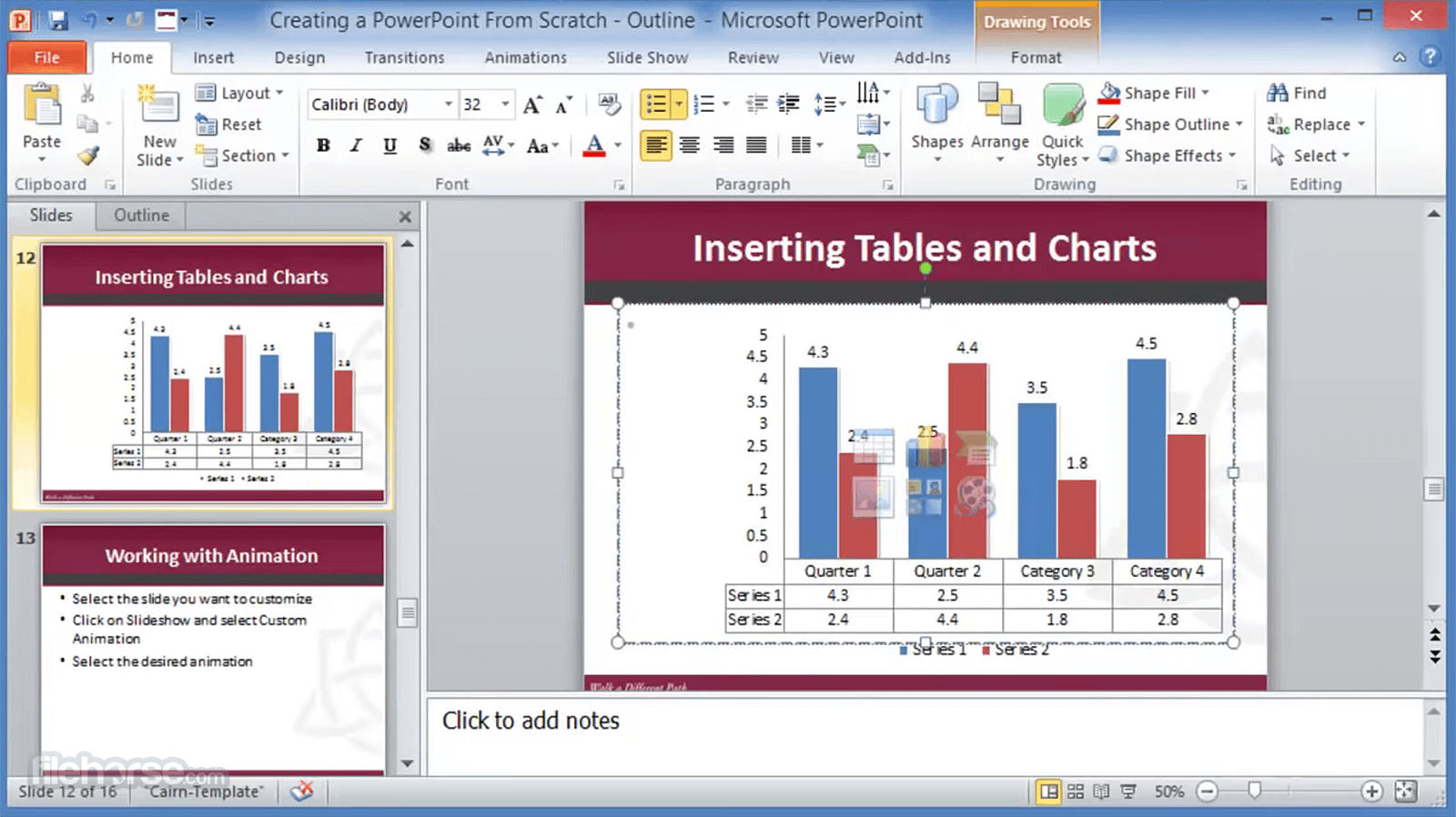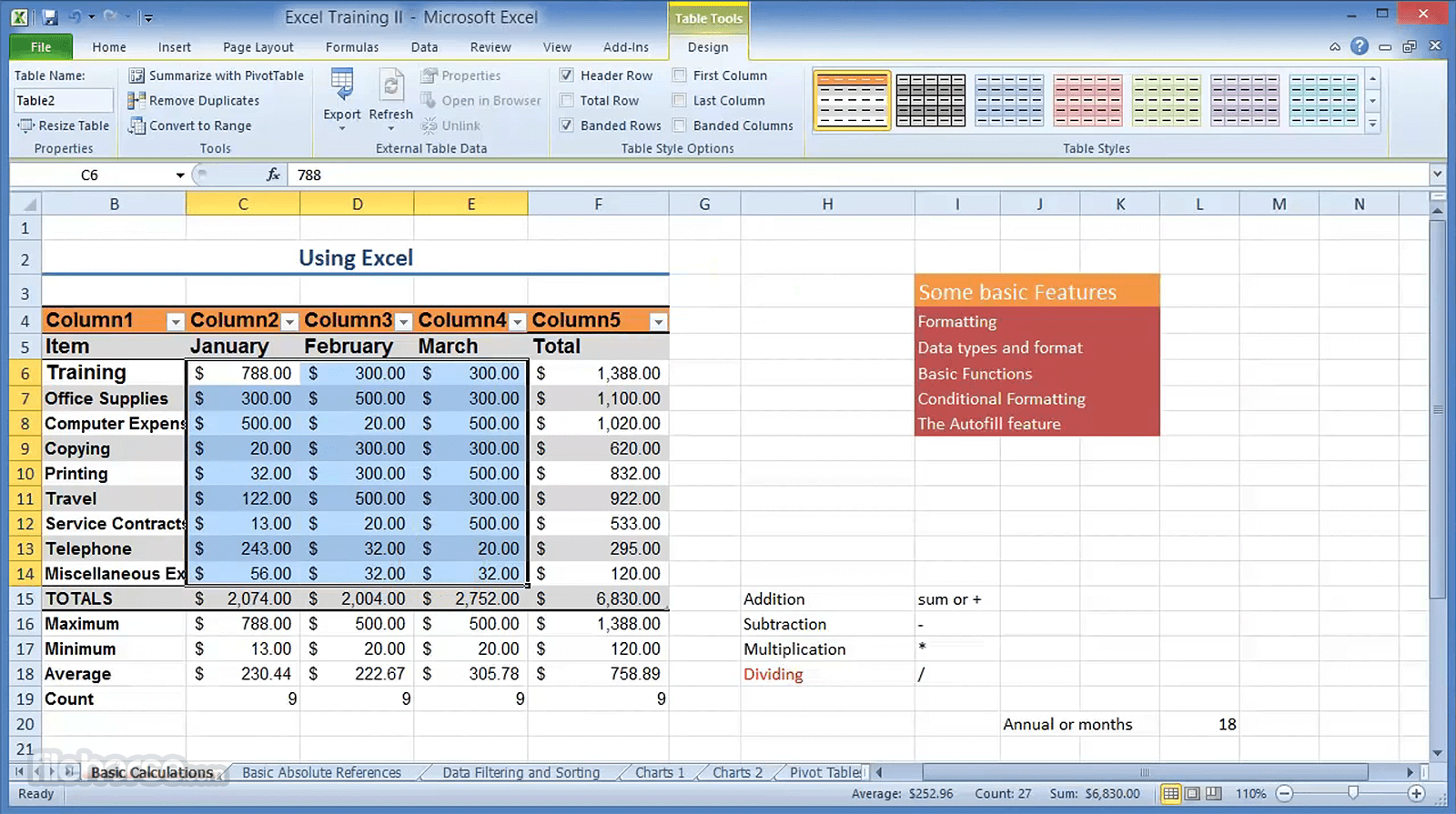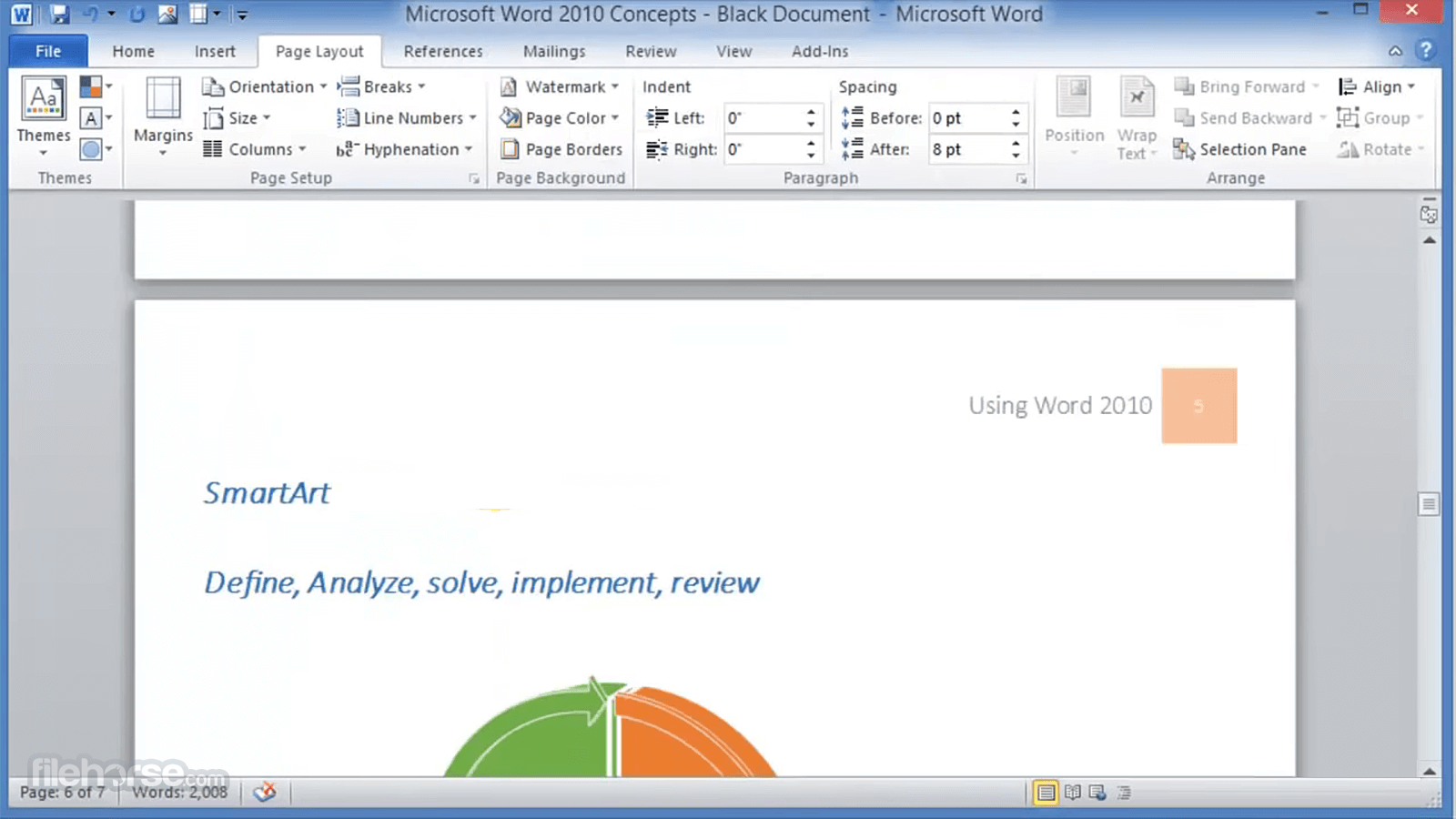-
Latest Version
Microsoft Office 2010 (32-bit) LATEST
-
Review by
-
Operating System
Windows XP / Vista / Windows 7 / Windows 8 / Windows 10 / Windows 11
-
User Rating
Click to vote -
Author / Product
-
Filename
officesp2010-kb2687455-fullfile-x86-en-us.exe
Get 15% off with promo code: FILEHORSE15
However, this great evolution of the Office formula was enabled by the experience that Microsoft Corp. developers gathered during the production of the predecessor Office 2007, who first introduced to the public the new graphical user interface (Fluent User Interface), the wide array of tools, and collaboration features. With Office 2007 serving as their base, a new version of this productivity suite managed to become one of the most celebrated suites of document creation, collaborative management, and document workflow optimization on the market, vastly overshadowing any competition.
The core improvements that every user of Office 2010 immediately felt were the additional improvement of the user interface (customizable ribbons finally arrived at all Office apps), faster performance, collaboration mode that allowed multiple users to edit the same document, faster Outlook search, better picture tools, security-focused Protected View sandbox mode, expanded file format support, new Backstage view interface and direct integration with the cloud storage and collaboration platforms OneDrive and SharePoint.
Additionally, the launch of Office 2010 also marked the debut of Office Online, a collection of free web-based versions of Word, Excel, OneNote, and PowerPoint.
Microsoft Office 2010 - 32-bit was the first version of this suite that allowed users to purchase not only one of the eight tiers of app bundles (from basic Starter tier to fully-featured Professional Plus) but also to purchase licenses of the individual apps. By late 2011, over 200 million licenses of Office 2010 were sold.
New Features
Microsoft Office features a wide array of features that impact every app offered in this suite. This includes better hardware acceleration for an easier showcase of visual elements, font effect enhancements, cropping improvements, background removal, integrated screenshot capture, and a wider array of accessibility options (including support for more languages and better text-to-speech service).
Microsoft Word 2010 received a great visual and performance upgrade in Office 2010. The usability of the app was increased with more powerful Paste options, a new Navigation Pane, Backstage View improvements, the ability to natively save/export PDF files, collaborative editing, and the ability to simultaneously save documents on local storage and in the cloud. However, some features found in Office 2007 Word were removed – integrated document scanning, startup assistant, diagnostics, various Clip Organizer features, and more.
Excel 2010 is powered by a brand new and optimized calculation engine, new graphing features, filtering options, macro recording chart elements, and the great expansion of the data points in a data series (limited only by the amount of user memory).
All other Office 2010 versions received a significant improvement in their functionality and UI, enabling home users and businesses of all sizes to better optimize their document management and daily workflow.
What’s the difference between Office 2010 and Microsoft 365?
While Office 2010 comprises applications like Word, Excel, PowerPoint, and Outlook, available for a one-time purchase to use on a single PC, Microsoft 365 offers a broader range of services. In addition to the premium versions of these applications, Microsoft 365 includes online storage with OneDrive and Skype minutes for home use.
With Microsoft 365, users can enjoy the full, installed Office experience across various devices such as PCs, Macs, tablets (including iPad® and Android™ tablets), and phones. Microsoft 365 plans are available as either monthly or annual subscriptions, providing users with greater flexibility in terms of pricing and payment options.
Alternatives
Microsoft Office: The latest version of Microsoft Office offers updated features and improved compatibility.
Microsoft 365 Personal: Create high-quality reports, essays, and class presentations!
LibreOffice: A free and open-source alternative, compatible with Microsoft Office file formats.
WPS Office: A cross-platform office suite with a familiar interface and robust feature set.
Apache OpenOffice: The leading open-source office software suite for word processing, spreadsheets, presentations, graphics, databases, and more.
Pricing
MS 2010 is no longer available for purchase directly from Microsoft. However, you may find second-hand licenses or opt for a subscription-based model, such as Microsoft 365, which provides access to the latest versions of Office applications.
System Requirements
- Operating System: Windows 7, Windows 8, or Windows 10
- Processor: 500 MHz or higher
- RAM: 256 MB or higher
- Hard Disk Space: 3 GB or more
- Display: 1024x768 resolution or higher
- Comprehensive suite of productivity applications.
- Wide range of features and tools for various tasks.
- Familiar user interface for users accustomed to earlier Office versions.
- Compatibility with older file formats.
- Reasonable pricing options for second-hand licenses or subscription-based models.
- Lack of cloud integration and native collaboration features.
- Limited support for newer file formats and advanced features.
- No longer receiving security updates or feature enhancements from Microsoft.
- Limited customer support options for older versions.
All in all, Microsoft Office 2010 is a comprehensive productivity suite that has served millions of users around the world. It offers essential applications like Word, Excel, PowerPoint, and Outlook, providing users with powerful tools for document creation, data analysis, presentations, and email management. With a familiar interface and a wide range of features, it allows users to enhance their productivity and streamline their workflows.
However, it's important to note that Office 2010 is no longer actively supported by Microsoft, which means it no longer receives security updates or feature enhancements. Additionally, it may have compatibility issues with newer operating systems and file formats. While Office 2010 can still be found through second-hand licenses or used copies, it's worth considering alternatives like Microsoft 365, which offer the latest versions of Office applications, cloud integration, and ongoing support.
Ultimately, the choice between Office 2010 and newer versions or alternative office suites depends on individual needs and preferences. If you require a reliable and familiar productivity suite for basic tasks, it can still meet your requirements. However, if you seek access to advanced features, improved compatibility, and the benefits of cloud-based collaboration, it's advisable to explore alternatives like Microsoft 365 or other office suites available in the market.
Note: Free to Try.
Also Available: Microsoft Office 2010 (64-bit)
 OperaOpera 120.0 Build 5543.61 (64-bit)
OperaOpera 120.0 Build 5543.61 (64-bit) SiyanoAVSiyanoAV 2.0
SiyanoAVSiyanoAV 2.0 PhotoshopAdobe Photoshop CC 2025 26.8.1 (64-bit)
PhotoshopAdobe Photoshop CC 2025 26.8.1 (64-bit) BlueStacksBlueStacks 10.42.86.1001
BlueStacksBlueStacks 10.42.86.1001 CapCutCapCut 6.6.0
CapCutCapCut 6.6.0 Premiere ProAdobe Premiere Pro CC 2025 25.3
Premiere ProAdobe Premiere Pro CC 2025 25.3 PC RepairPC Repair Tool 2025
PC RepairPC Repair Tool 2025 Hero WarsHero Wars - Online Action Game
Hero WarsHero Wars - Online Action Game SemrushSemrush - Keyword Research Tool
SemrushSemrush - Keyword Research Tool LockWiperiMyFone LockWiper (Android) 5.7.2
LockWiperiMyFone LockWiper (Android) 5.7.2






Comments and User Reviews